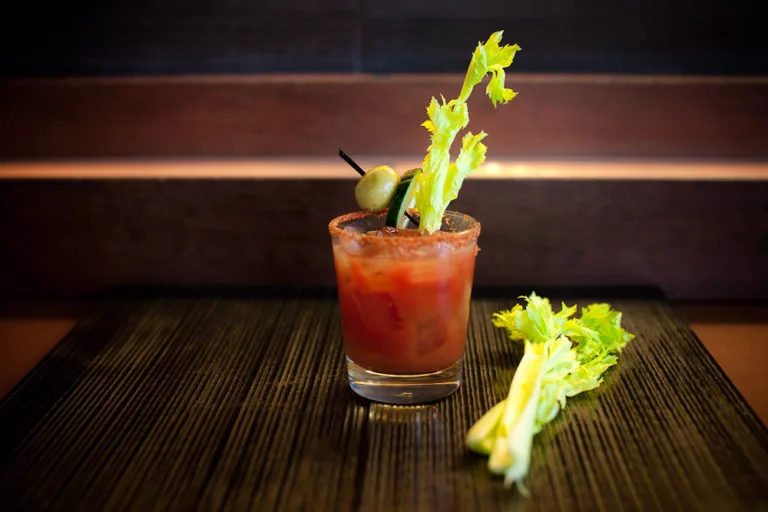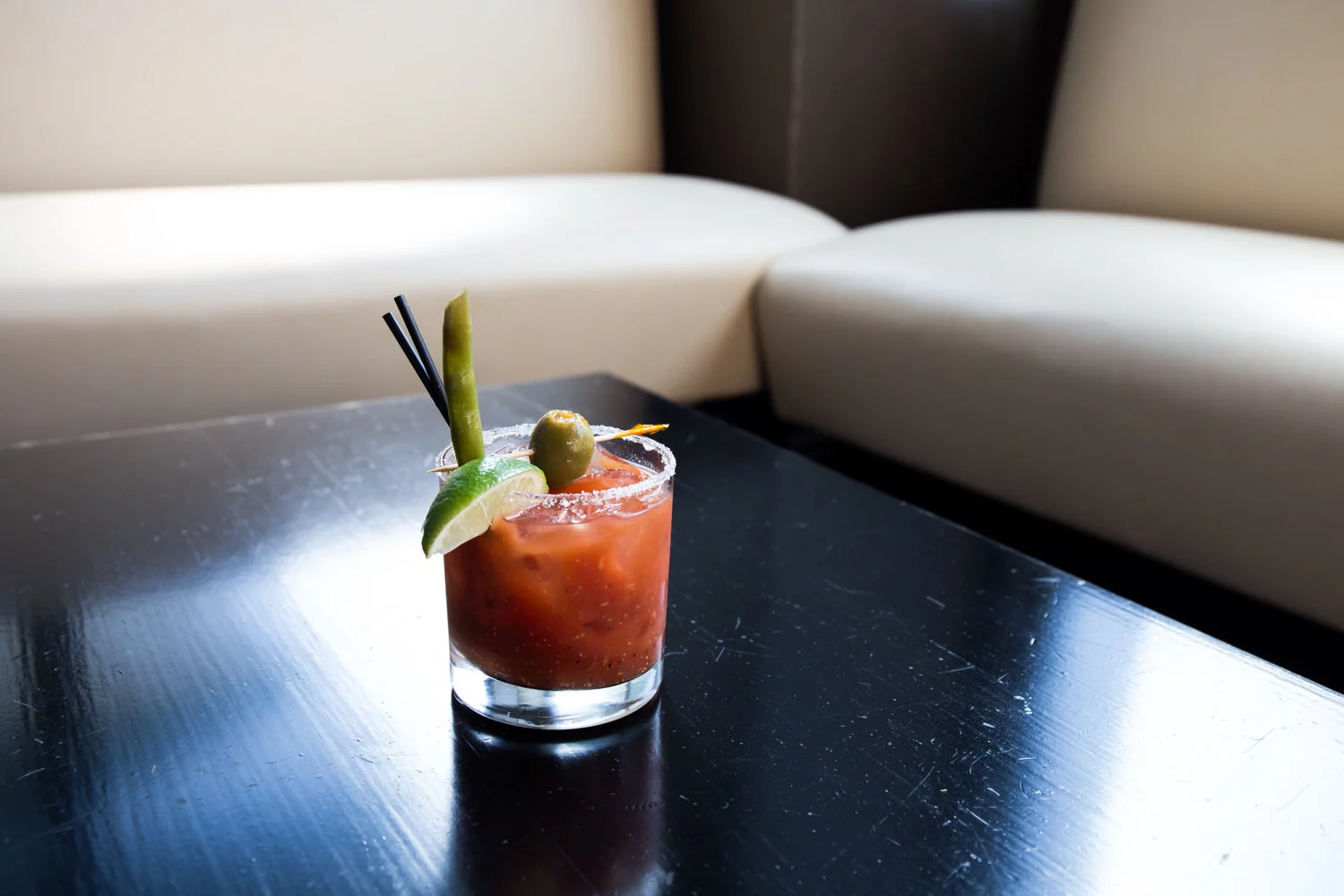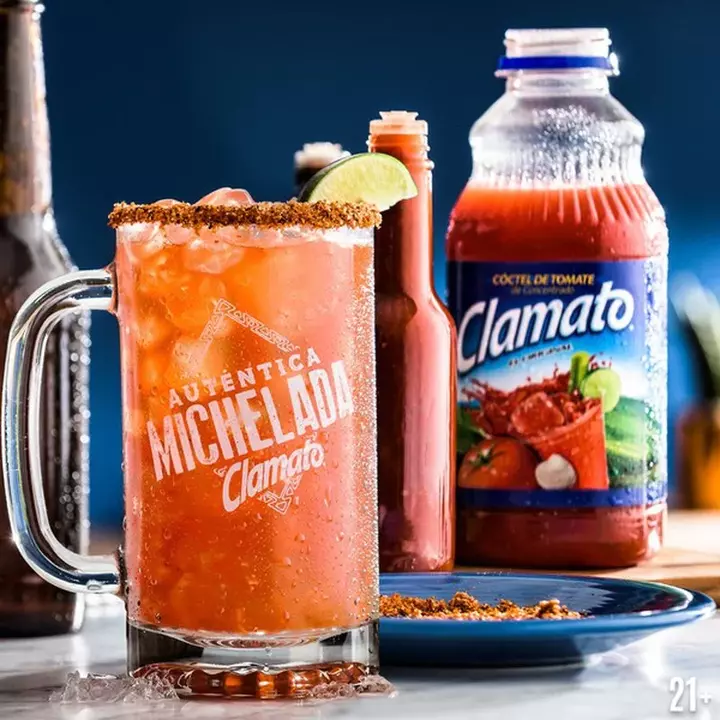Tijuana isn’t exactly known for mornings. Vegas’s naughty cousin, San Diego’s Upside-Down, deranged refraction of the American Dream, Tijuana has, for decades, been synonymous in the American cultural imaginary with sex, booze, drugs, and all their itchy, throbbing consequences. Which makes it the ideal place to drink the greatest hangover cure known to man: the clamato preparado. Made by pouring a Bloody Caesar (a Bloody Mary variation made with clamato instead of tomato juice) over heaping spoonfuls of chopped clams, a clamato preparado is sweet, sour, hot, and briny, the chewy morsels of clam at the bottom booze-soaked coercion into eating. And the best clamato preparado in town is served over the long wooden bar at Caesar’s, Tijuana’s most venerable restaurant.
When Caesar’s was founded in 1924 by Italian immigrant Caesar Cardini, Tijuana had only existed as a city for about 30 years. Little more than a cattle ranch when it was officially incorporated in 1890, the city’s status was decided by the presence of the first American customs agent stationed at the newly minted border. Until the end of the Mexican-American War in 1848, all of the modern Southwest and the state of California were still part of Mexico. Tijuana became a city when a line was drawn in the dusty soil, separating it from the largest city in the area, San Diego. As Marie-Laure Courbes, a scholar of immigration at the Colegio de la Frontera in Tijuana, puts it, “the whole story of Tijuana has to do with that border.”
Specifically, it has to do with what you couldn’t get on the other side. Starting with Prohibition in the 1920s, Hollywood types and military men flocked to Tijuana for long nights of booze and gambling. Caesar’s, died in the middle of town on Avenida Revolución, catered to them all, rising to international fame in the early years of its existence thanks to the restaurant’s invention of the Caesar Salad. In the 1950s, Wallis Simpson, the American socialite for whom Prince Edward abdicated the British throne, dined at Caesar’s. Elizabeth Taylor was spotted there, too.
Julio Álvarez has worked as a bartender in Tijuana since the 1970s, around the same time, he told me, that the clamato preparado first turned up there. According to Álvarez, the drink has its origins north of El Norte, in the Canadian city of Calgary, where the Bloody Caesar was first was invented in 1969. From there, Álvarez claims, the Caesar migrated south via the casinos of Las Vegas to the Hotel Lucerna in Mexicali. Eliazar Lemus, who’s worked there for the last 30 years, told me hotel lore dates the clamato preparado to 1968 (timelines rarely line up in these types of oral histories), when a member of the hotel owner’s personal posse, nicknamed The Chichis, came in with a vicious hangover and asked the bartender to fix him. “From then on,” Lemus says, “all over Mexico that’s what you drink when a good night leaves you feeling bad the next morning.” From there, Álvarez says, the drink came to Caesar’s and spread throughout Tijuana, a city of epic (and epidemic) hangovers.
Dapper in his burgundy vest and fine gray mustache, Álvarez watched has watched Tijuana change from the ideal vantage point: behind the bar. He took up his position as a cantinero, or bar manager, at Caesar’s five years back, not long after he closed Rendezvous, the bar that his father had opened and where he’d poured his first drink at 17. “When I was a kid in the ‘60s,” Álvarez told me when I first visited Caesar’s on a fine morning in early January, “we used to just walk up to the border guards and ask to cross. We’d go over to buy burgers at Jack in the Box. They cost 25 cents.” He leaned on the bar with the easy insouciance of a lifetime barkeep. “People from Hollywood, they’d come for music and drinks and bullfights.”
Less gilded clientele came for other things: quick divorces, abortions in the pre-Roe v. Wade era, or cheap cosmetic surgery. In the ’90s, they came for affordable medical care—impossible to find in the States—and generic pharmaceuticals. When the peso plummeted in the ‘80s (and again in the ’90s), Tijuana went from glamorous to cheap, a town of easy thrills and low-rent fantasies. For poor Mexicans, it was a place of opportunity. Even when the economy suffered elsewhere, Tijuana managed to thrive. Every decade from 1950 to 2000, the city’s population doubled, yet average unemployment rates remained well below the national average. Norma Iglesias, a scholar of transborder studies at UCSD, put it this way: “Tijuana reinvents itself every time something happens on the other side. For a long time, it was the largest bar in the world, then it became America’s pharmacy. It’s a laboratory for the world.”
Caesar’s survived it all, if barely. By the ‘90s, the restaurant had become a relic of the city’s glamorous past. Javier Plascencia, whose restaurant Misión 19 spearheaded the city’s gastronomic boom back in 2012, and whose family has run restaurants in Tijuana for decades, remembers a very different Caesar’s from his youth.
“There was a pharmacy upfront with a glass case full of Viagra. Inside, there was still the long bar and four small booths. At the back, there was a black curtain and behind that, there was a table dancing,” he told me. “Some of the waiters who work there now were there in the 90s, too, and they’ve told me it was really sad. American tourists would come in, they’d have their Viagra, eat their salad, and go watch a table dance.”




